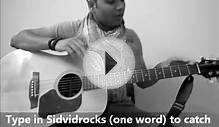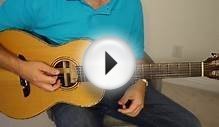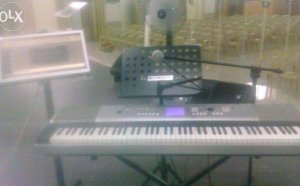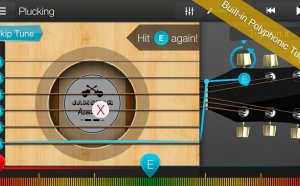
Very Basic Guitar lessons
In this guitar lesson you will be putting a simple finger picking pattern with some basic chords. The chords that you will be using are A, D, E and F# minor. If you don’t know these chords yet you should take some time to look at the chord diagrams that we have given you. Once you have all of the basic chord shapes down you can use the basic finger picking pattern that you will be learning to play through the progression presented to you in this lesson. We have given you the TAB and sheet music so that you can see exactly what is happening. Remember, when you see a T I M or A on the sheet music those letters represent your thumb index middle and ring fingers on your picking hand.
The finger picking pattern that you will be using in this progression is pretty simple. You will start with your thumb and follow with your index, middle and ring fingers. The bass note that you will be playing with your thumb changes from chord to chord but it will always be the root of whatever chord you are playing. Your index, middle and ring fingers will always be playing either the 4th, 3rd and 2nd strings or 3rd, 2nd and 1st strings depending on which chord you are playing.
The progression that you will be playing through is A D E F# minor D E A. You should play through the finger picking pattern twice for each chord. Every time you see a particular chord you will be playing the same strings for that chord. For example, every time you see an A chord you will play the 5th string with your thumb and the 4th, 3rd and 2nd strings with your index, middle and ring fingers. Try that right now. Make an A chord and play the 5th string with your thumb followed by the 4th string with your index finger, 3rd string with your middle finger and 2nd string with your ring finger. Play this over and over again until you get a nice smooth rolling action going with your thumb and fingers on your picking hand.
The finger picking patter for the other chords in the progression is the same but the strings that you will be picking change a bit from chord to chord. When you move to the D chord you will be playing the 4th string with your thumb and the 3rd, 2nd and 1st strings with your index, middle and ring fingers. Every time you see an E chord you should play the 6th string with your thumb and the 3rd, 2nd and 1st string with your index, middle and ring fingers and every time you see an F# minor chord you should play the 6th string with your thumb and the 4th, 3rd, and 2nd strings with your index, middle and ring fingers.
It may take you a while to hit the correct strings with you thumb and fingers when changing from chord to chord, but if you practice consistently you will see you’re your thumb and fingers will start to remember which strings to play and where those strings are.
YOU MIGHT ALSO LIKE



Share this Post
Related posts
Basic Guitar lessons for Kids
Help them choose the right instrument. Guitars come in all shapes and sizes and it can be quite bewildering to someone buying…
Read MoreBasic guitar lessons for Beginners acoustic
Research and choose instruction websites online. The Internet has hundreds of web sites offering free lessons, most of…
Read More










